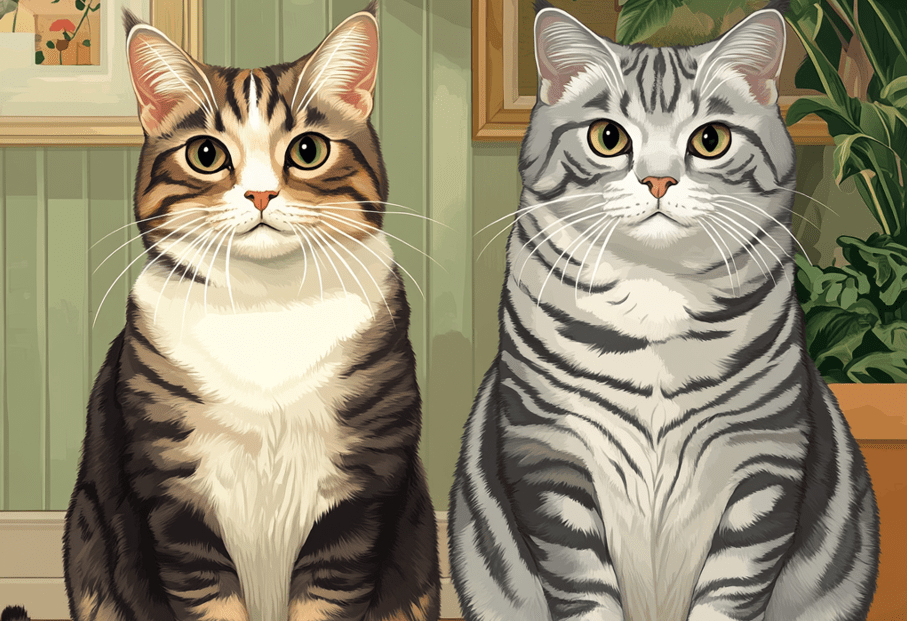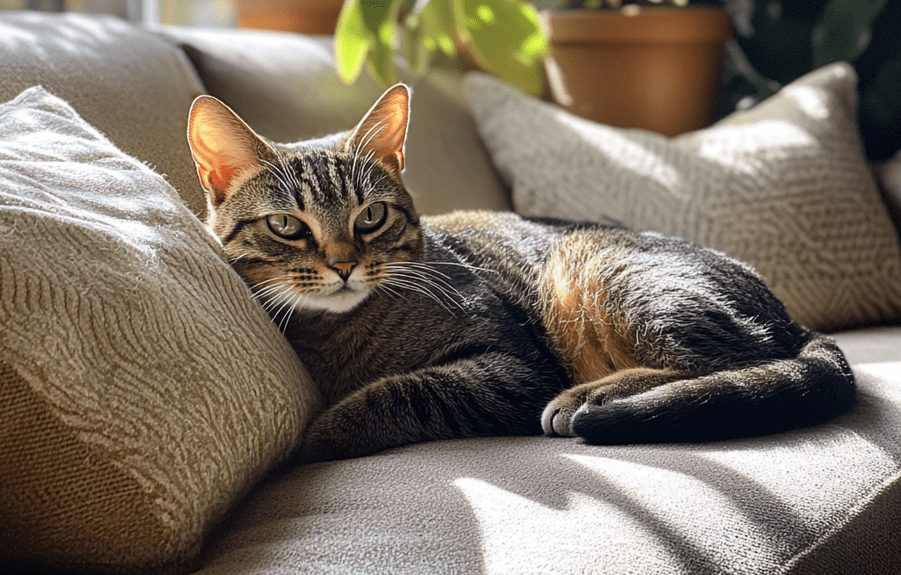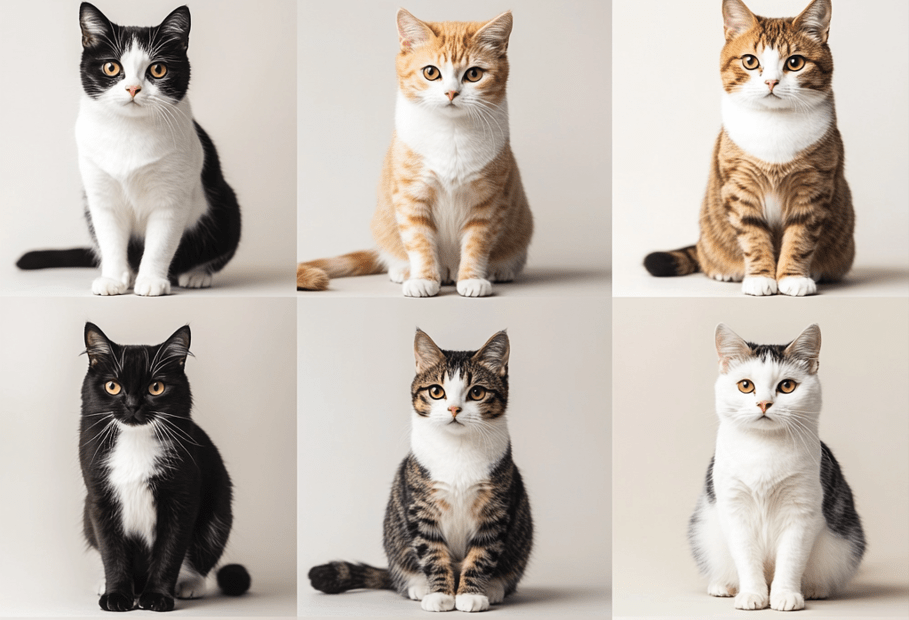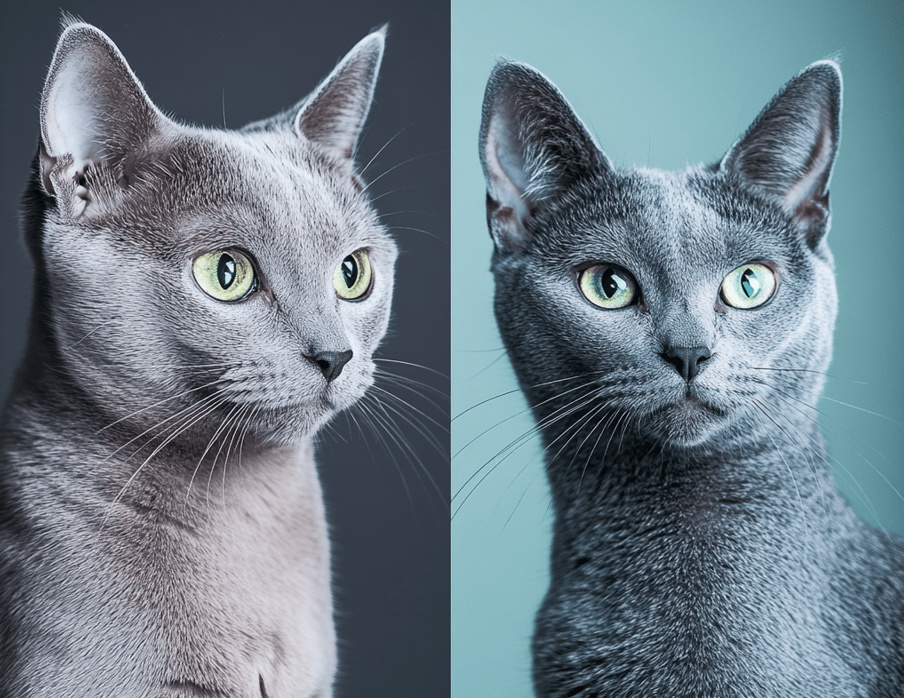
Having a Domestic Shorthair cat as a pet brings many benefits to owners. Many people enjoy the company of Domestic Shorthairs because these cats are naturally intelligent and trainable. Your pet cat demands training methods to gain positive behaviours and become part of your household. You will find helpful information here to train your Domestic Shorthair cat properly. In this article, we’ll explore the top 15 training tips for Domestic Shorthair cats that every owner should know to ensure a well-behaved and happy feline companion.
Overview of Key Training Tips for Domestic Shorthair Cats
To start this guide we will first review our training plan’s main sections which are:
- Understanding Your Domestic Shorthair’s Personality and Behavior
- Creating the Right Training Environment
- Using Positive Reinforcement Techniques
- Teaching Basic Commands (Sit, Stay, Come)
- Litter Box Training Made Easy
- Dealing with Scratching and Clawing Behavior
- Handling Food and Treat Training
- Leash and Harness Training for Outdoor Adventures
- Preventing Destructive Behavior
- Training for Veterinarian Visits and Grooming
- Socializing Your Cat with Other Pets
- Keeping Training Sessions Short and Fun
- Recognizing Signs of Stress and Overtraining
- Training Older Domestic Shorthair Cats
- Importance of Consistency in Training
This article provides you with essential training knowledge which will help you and your Domestic Shorthair cat develop a happy bond.
1.Understanding Your Domestic Shorthair’s Personality and Behavior
Recognising how your cat behaves is essential for the first stage of training. Each Domestic Shorthair shows individual traits but these cats commonly prove friendly to adjustments and smart. Socialisation with people and investigation are their traits but they have less aptitude to act on commands like dogs. Real training with cats needs patient practice because these feline animals follow their own personal pursuits.
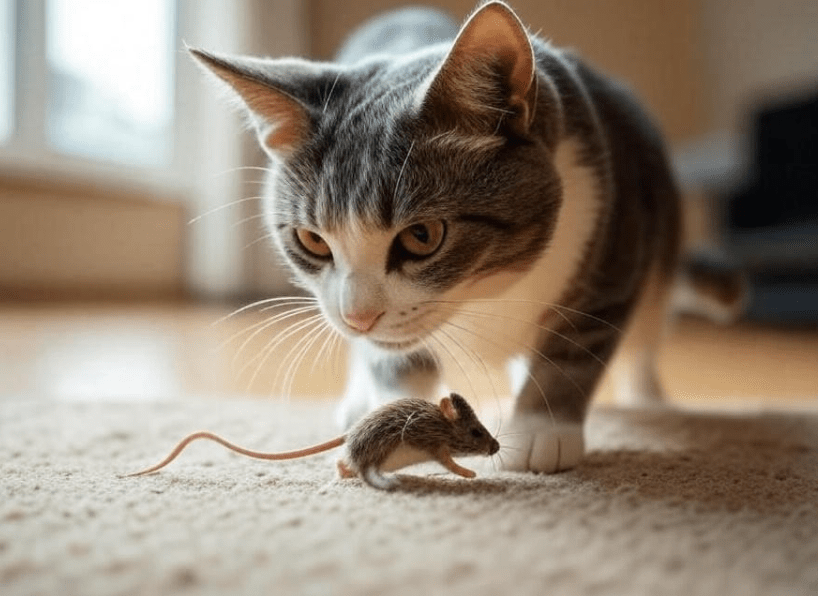
The best training results come from learning how your cat reacts to things and expressing its feelings through body signals. You can use special cat toys during training because these items provide entertainment to your feline.
2.Creating the Right Training Environment
Establishing a peaceful space without distractions forms the initial steps to train your Domestic Shorthair cat. Select a peaceful room within your home without many disruptions for your cat to concentrate on. The space your cat trains in should be without safety risks plus blocks out distractions from other animals and noise.
Putting safe rest areas for your cat helps them feel at peace during training. Creating an appropriate space for training prevents negative emotions from interfering with the learning process.
3.Using Positive Reinforcement Techniques
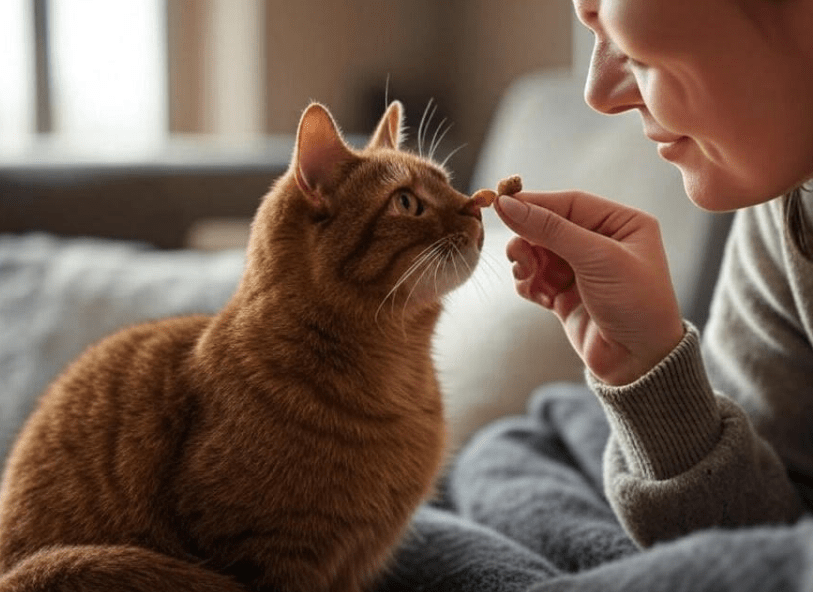
The best way to train Domestic Shorthair cats is through positive reinforcement. Cats understand better when you select rewards over using treats, affection or play opportunities as their learning prompts. Training by rewarding useful actions builds stronger connections with your cat while achieving better results than punishing bad behaviour.
Give your cat small rewards at the moment they successfully react to your command. As they connect the command to the reward several times they will naturally continue this behaviour.
4.Teaching Basic Commands (Sit, Stay, Come)
Although cats are not as naturally inclined to follow commands as dogs, it is possible to teach them basic commands such as “sit,” “stay,” and “come.” Start with one simple command, like “sit.” Standardise your behaviour by moving a treat from the top of your cat’s head towards their tail. When the treat moves up toward their head their bottom naturally sinks to the floor. As your cat sits down offer a reward and some praise.
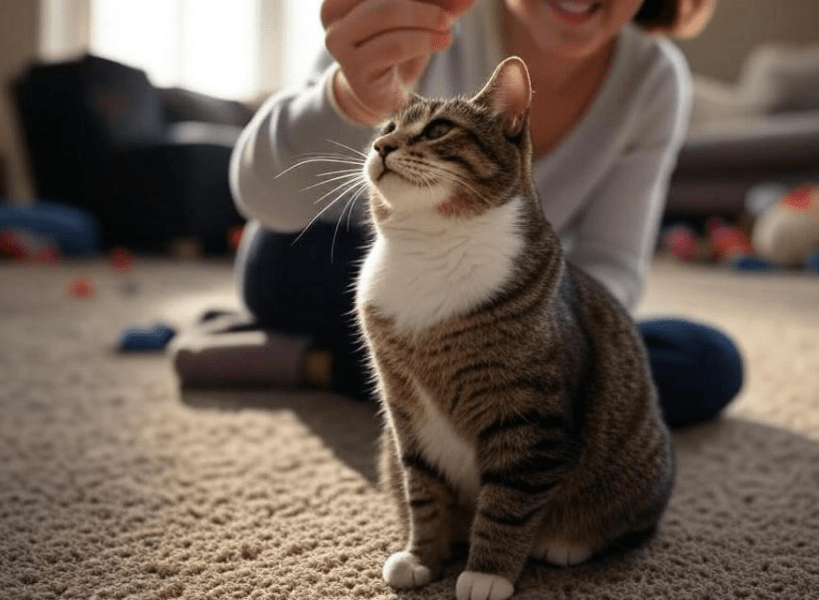
Repeat this process multiple times, gradually adding the verbal cue (“sit”) as they get the hang of it. Similarly, you can teach the “stay” command by holding your hand up and using a treat to reinforce stillness.
5.Litter Box Training Made Easy
Domestic Shorthair cats start using the litter box well because owners can teach them this skill easily. Their natural instinct makes cats effortlessly recognise proper elimination areas because they prioritise cleanliness. Choose a calm area close by to put the litter box and use a suitable amount of litter inside.
To prevent soiling you should empty the box contents every morning before adding more litter. When your cat uses the wrong area to relieve itself do not give them physical consequences. Place the cat litter nearby in an organised and sanitised region while experimenting with various types of litter to identify their preference.
6.Dealing with Scratching and Clawing Behavior
Cats perform scratching essential actions to maintain their physical fitness and territorial status as they groom their claws. When cats scratch inappropriate surfaces like furniture it becomes a behaviour problem. The best way to train Domestic Shorthair cats is by giving them alternative items to scratch such as post pads and mats. Put these posts where your cat spends time and reward your pet when it uses the scratching tool instead of the furniture.
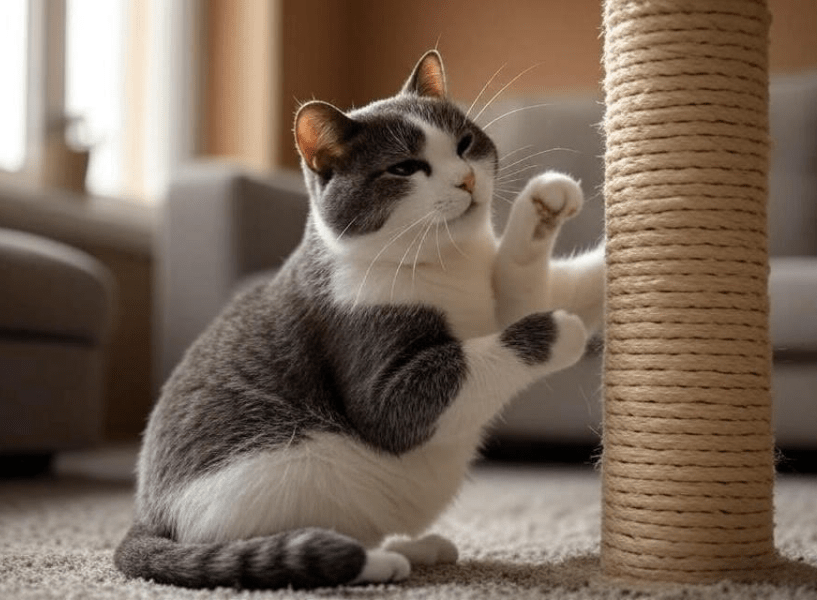
When your cat returns to inappropriate scratching behavior, guide them toward the post then reward them with a treat. Your cat will understand its proper scratching areas through time.
7.Handling Food and Treat Training
Food-based training works best to teach Domestic Shorthairs. Offering food as rewards during practice teaches your cat what actions to repeat. Give your cat simple nutritious treats that they should be able to eat swiftly. This approach helps the training go smoothly while keeping the experience enjoyable for the cat since treats are given at reasonable intervals.
Keep treat sessions regular and never replace them for full nutritious meals. You need to use treats moderately because excessive feeding can lead to weight problems.
8.Leash and Harness Training for Outdoor Adventures
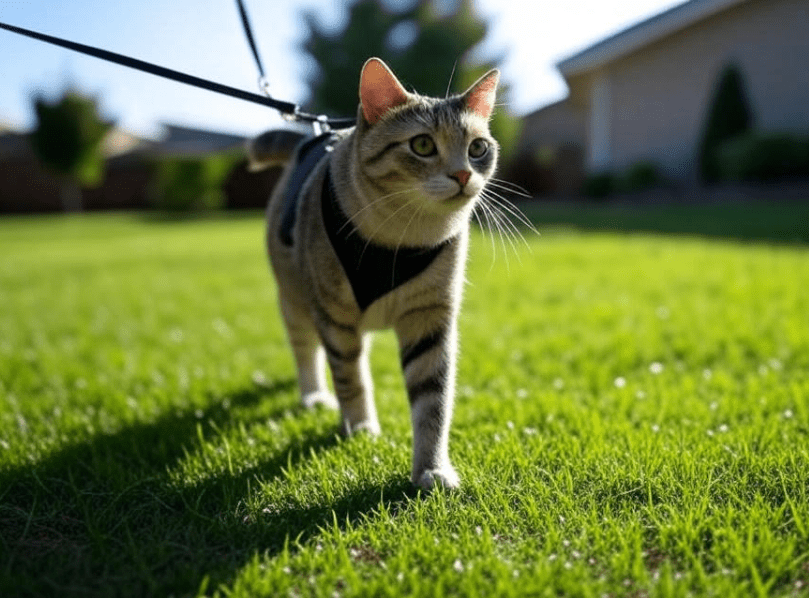
Training your Domestic Shorthair to walk on a leash and harness becomes exciting for both of you when you bring your cat safely outdoors. Let your cat wear and become familiar with a harness at home before making it the first time for outdoor walking. When your cat feels at ease with the harness, start slow walks inside the home.
Let your cat grow used to the harness and outdoors with safe leash practices. Both your cat and you will experience comfort due to the harness as your pet explores outdoor spaces.
9.Preventing Destructive Behavior
Training helps stop destructive actions such as countertop knocking and inappropriate chewing. Guide your cat’s activity towards positive actions through the use of entertaining items and stimulating playtime. When your cat displays harmful actions, give them a non-harmful option then reward them after using it properly.
Put away all objects your cat likes to mess with and praise him with treats whenever he remains calm and undamaged.
10.Training for Veterinarian Visits and Grooming
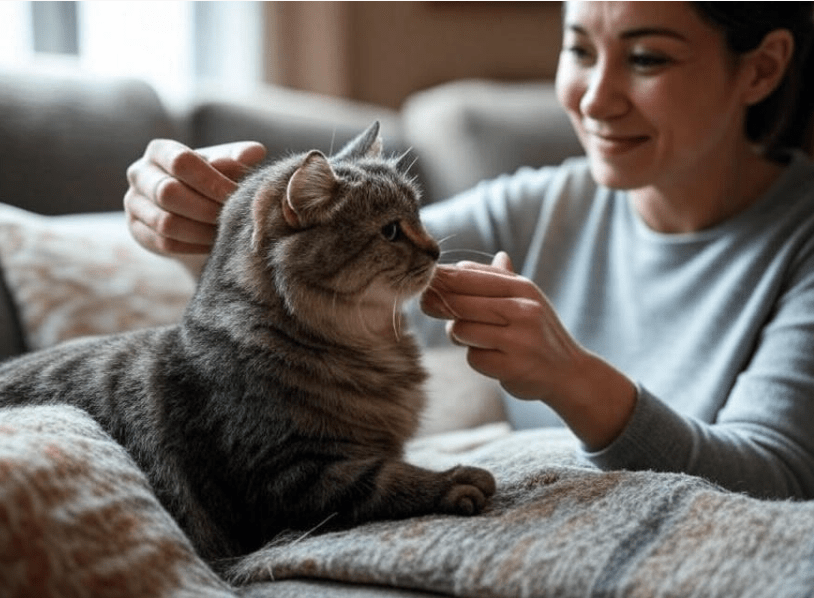
Domestic Shorthair cats normally dislike going to veterinary clinics and grooming appointments. Teaching your cat to handle gentle touching makes stress feel less intense during petting sessions. Begin with light hand contact on all parts of their body including their paws, ears, and body in daily sessions. Offer cat rewards when they remain still during grooming time.
You should let your cat explore their carrier before appointments to make vet visits easier. Keep the carrier available with a pleasant blanket inside while giving treats rarely to train your cat to like the carrier. The practice makes travelling less stressful at the actual time of departure.
11.Socializing Your Cat with Other Pets
In most cases Domestic Shorthair cats form bonds with other household pets when owners introduce them carefully. Start by letting your pets meet slowly and give them time to accept their new scent. Bring the pets together carefully andreward positive behaviour as you help them feel secure during integration.
Train your cat alone before letting it meet new pets to make sure your cat remains safe.
12.Keeping Training Sessions Short and Fun
Training sessions with cats should remain short yet regular because they require quick learning sessions. Keep practice sessions between 5 and 10 minutes while maintaining their positive nature. Training needs to end when your cat shows signs of wear to avoid making both of you unhappy.
When your training sessions remain enjoyable for your cat they will maintain interest and get excited about upcoming practice.
13.Recognizing Signs of Stress and Overtraining
Training must remain a supportive process for your Domestic Shorthair. Notice when your cat demonstrates stress behaviours like continuous meowing or panting as well as hiding or aggressive displays. When your cat exhibits these signals you should stop training for now.
Sometimes, less is more. Your domestic short hair needs consistent guidance and patience beyond their specific boundaries for training success.
14.Training Older Domestic Shorthair Cats
Despite their ageing nature Domestic Shorthairs need proper training methods that rely on endless patience. When training older Domestic Shorthair cats requires additional time to establish new habits. Work on one behaviour with positive feedback methods. Training with elderly cats needs low-key activities that match their processing speed.
15.Importance of Consistency in Training
Teachers of Domestic Shorthair cats need to stick with their training methods regularly. When training programmes shift unexpectedly the cat feels uncertain and loses her training gains. Keep to your set training plan and maintain the same communication signals plus rewards. Regular training practice makes learning easier for cats while helping them show better results each day.
Conclusion
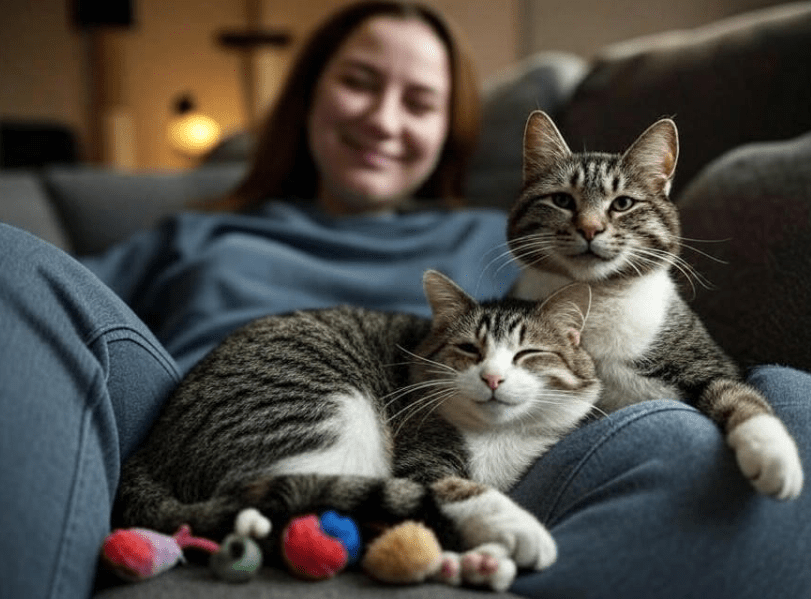
A Domestic Shorthair cat needs time and determination to train effectively but you will succeed. You can help your cat improve its habits when you know its character and use rewards while remaining steady in your training methods. Customise the training tips according to your specific cat’s character. Through these 15 training methods your Domestic Shorthair cat will succeed at home and you will form a strong connexion through shared understanding.

